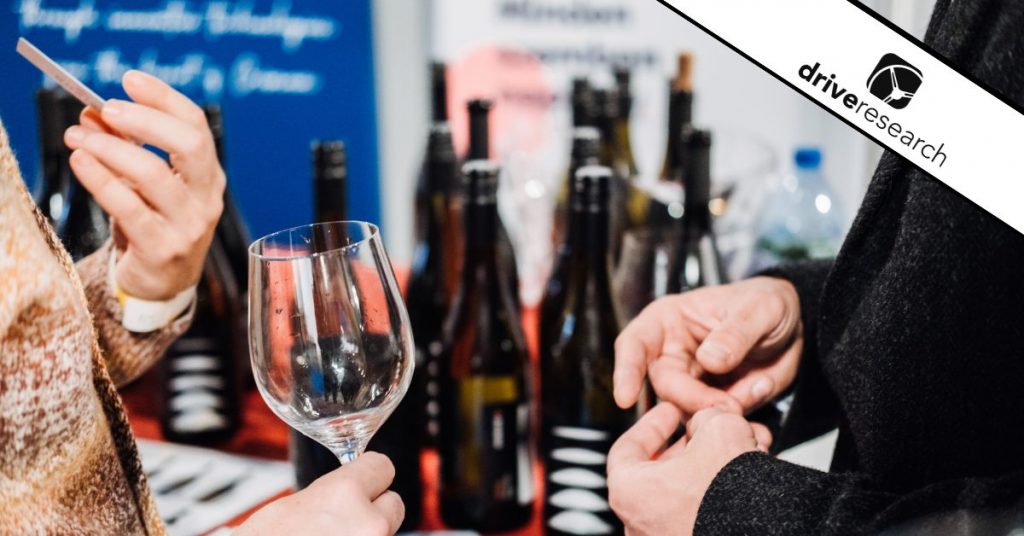
Wineries love market research! Common market research goals for wineries include better understanding target consumers and customers. This helps wineries create data-driven strategies to increase sales and winery visits.
There are several objectives winery market research can address. Some typical market research objectives for wineries include gathering feedback from winery visitors, better understanding perception and satisfaction among target consumers, and gathering feedback from customers.
Market research can be used to measure awareness of the winery, perception of the winery compared to competitors, likelihood to recommend the winery, purchase habits, and more. Winery market research can also be used to help understand what current marketing messages and platforms work best.
Looking for an example of what a winery market research study looks like? Here’s a vineyard and winery market research case study that reached consumers, customers, and winery visitors.
Here’s an inside look at how wineries use market research to create data-driven strategies to increase sales and visits.
Option #1: Winery intercept surveys
Winery intercept surveys are ideal for gathering in-the-moment feedback. Wondering why visitors came to the winery and what drew them in? Or, wondering how much visitors spent at your winery versus others? Feedback gathered through this method is very accurate knowing their interaction with the winery is fresh and top-of-mind.
Key questions to include in a winery intercept survey include sources of awareness for the winery, other wineries visited, satisfaction with the winery and other wineries visited, likelihood to recommend, amount spent at winery and other wineries visited, demographics, and more.
A winery intercept survey involves having a team of professional market research interviewers on-site. Depending on the size of the winery, 1 to 5 or more professional market research interviewers may be needed. These surveys are short easy to administer knowing the goal is to quickly gather important feedback from visitors.
Interviewers should be located near exits of the winery and approach guests as leave the winery. To reach a variety of audiences, on-site interview days and times should vary. For example, the team may be on-site on weekdays as well as a weekend to capture differences and similarities between visitors.
Option #2: Online survey to winery email list
Oftentimes, wineries have lists of customer and visitor email addresses. Sitting on one of these lists? Wineries can put these lists to use by developing a survey to address several objectives like awareness, preferences, purchase habits, satisfaction, likelihood to recommend, and more.
Knowing the survey is most likely reaching customers, questions typically focus on gathering opinions of the winery and competitors the survey respondent is aware of. This helps put winery preferences, satisfaction ratings, and likelihood to recommend metrics in perspective.
This type of study is typically easy to implement since respondent contacts have already been gathered and are ready to be used.
Option #3: Winery brand equity study
A brand equity study gathers feedback from general consumers and winery customers. This survey is sent randomly to a target audience. Typically, these studies include a survey sent to general consumers within specific geographic areas. For example, it may target those aged 21 and older who live within 30 miles of the winery.
Since this survey randomly reaches customers and non-customers, awareness and perception of the winery and competitors are key questions. Unlike research conducted solely with customers, the findings from a brand equity will point to overall awareness and perception of the winery among the entire target market.
Here’s an inside look at a recent brand equity study conducted by Drive Research.
What’s the market research process look like for wineries?
There are 6 steps in a typical market research study. The 6 steps include the proposal, kickoff meeting, survey drafting, fieldwork, reporting, and debrief meeting.
Step #1
The market research process begins with a proposal. The proposal defines the goals and objectives of the research, reviews of market research process from start to finish, and states the cost of the project.
Step #2
Once the proposal is finalized and signed off, the winery and market research team will hold a kickoff meeting to discuss research goals, potential survey questions, and project next steps.
Site #3
After the kickoff meeting, the market research team will develop a survey draft based on the goals and objectives of the research.
Step #4
Once the survey draft is finalized fieldwork begins.
Step #5
After fieldwork ends, the market research team will review and analyze the data collected to create a report.
Step #6
When the report is delivered, the final step is to hold a debrief meeting to discuss the results.
There are several different variables which impact the timeline of a market research study. In general, some winery studies are completed as quickly as 1 to 2 weeks while others may take 3 to 5 weeks to complete.
Here’s more details on the market research process.
Contact Our Winery Market Research Company
Drive Research is a market research company which specializes in working with wineries. Our team also specializes in several different industries such as small businesses, retail, restaurants, travel and tourism, and more.
Have a question? All you have to do is ask!
Message us on our website
Email us at [email protected]
Call us at 888-725-DATA
Text us at 315-303-2040



